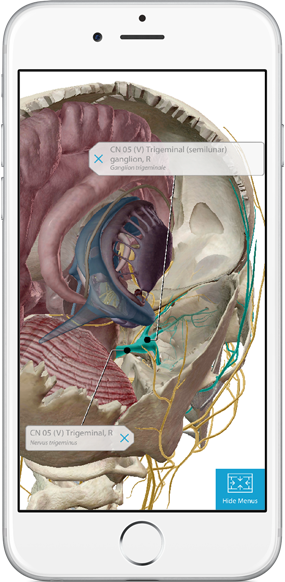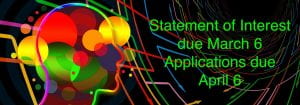Please join the Teaching, Learning, and Technology Roundtable and the Office of Information Technology in congratulating this year’s winners of Technology for Innovative Learning & Teaching Pilot Project Grants. These grants of up to $5000 fund innovative teaching projects that incorporate new technologies and can be used as a model for other faculty members. This year’s grants include projects that enhance learning spaces on campus and develop student skills in digital media literacy, fluency, and publication.
Mobile Whiteboards for Design Thinking
Antonio Alvarado, Munday School of Business, Executive in Residence
Design thinking is a human-centered approach to problem solving that relies heavily on the practices of collaborative ideation and prototyping. The Practicum is an experiential learning approach for a hands-on lean experiment methodology that implements design thinking. The Munday School of Business has introduced courses in design thinking and experiential learning to keep up with the emerging presence of design thinking and entrepreneurial practice in the field of entrepreneurship. Traditional classrooms, with static seating and a sole writing surface dedicated to the professor at the front of the room, pose strict limitations on the extent to which small groups can engage in the brainstorming, discussion, and exploration that are fundamental to the design thinking process. The introduction of mobile whiteboards to the classroom would provide small groups of students with a surface to capture their work as they brainstorm around a topic and potential solutions. These whiteboards can also function as dividers to section off the room, giving each group a semi-private space of their own to collaborate.
Integrating real-time microscopic imaging into biology lab courses
Daniel A. Gold, Ph.D., Assistant Professor, Department of Biology, School of Natural Sciences
Optical microscopy is essential to analyze and understand the biological world that exists at the scale below our level of visual detection of the naked eye. Many lab courses in biology involve the observation and manipulation of living organisms that exist below this visual threshold. As such, it is critical to maximize the efficiency of students to be able to participate in visualization of these organisms. Moreover, it is especially important that the instructor and students can co-observe and analyze the same images at the same time. In practice, this is difficult if not impossible in a lab course setting where a procession of students wait for a short glimpse through the eyepiece of a microscope. Besides this process taking valuable lab instructional time, if living organisms are being observed, the movement of that organism usually necessitates a re-configuration of the image by the instructor. For example, the organism used for the Cell Biology lab course is a microscopic nematode (a worm less than one millimeter long) that is a relatively brisk mover. Thus, it is rare that a group of students are able to observe and analyze the same phenomena at the same time. A promising solution to this is to use a microscope coupled to a digital camera that can be configured to connect to the digital projector in the classroom and display the microscopic image in real time so that the entire class and the instructor can discuss the same exact phenomena.
Wireless Projection for Mobile Programming
Bilal Shebaro, School of Natural Sciences, Assistant Professor of Computer Science
COSC 3326: Mobile Programming is a Computer Science course in which students learn to develop iOS apps for the iPhone, iPad, and/or Apple Watch. This is a project-based, hands-on course where there are up to 50+ devices in use per class session, as the professor and every student use both a computer for programming and an iPhone or iPad for testing. Sharing the specific screen(s) that would be most useful for instruction at any given moment is nearly impossible. The result is that only the professor’s devices can be easily shared with the class, augmented by verbal cues for coaching and troubleshooting as the students work. The implementation of wireless projection in the classroom would open the possibility to share any of the 50+ screens that would best support instruction in real time – the professor or any student could project any screen at any time to share milestones, collaboratively troubleshoot, or show off a completed app. A classroom with wireless projection could help create a more student-centered learning environment that supports greater levels of engagement, collaboration, and accountability for their work.
Upgraded Projection System and the Implementation of Smart Technology in JBWN 202
Dr. Matt Steffenson, School of Natural Sciences, Assistant Professor of Biology
This project’s goal is to upgrade the projection system in John Brooks Williams North (JBWN) 202 to a smart, short-throw projector. JBWN 202 is the primary room being used to teach General Biology: Cells, Genetics and Organ Systems (BIOL 1307) and General Biology: Organisms and Populations (BIOL 1308). Between Fall 2017 and Spring 2018, a total of 342 students were enrolled in all sections of the aforementioned courses held in JBWN 202. The objective of this proposal will be to upgrade the projection system to enable for more active learning pedagogical approaches in JWBN 202. Both BIOL 1307 and 1308 are currently in the process of increasing the proportion of active learning activities and approaches as part of the Improving Undergraduate STEM Education (IUSE) program through the National Science Foundation. However, while many new pedagogical approaches have been integrated into these courses, few technological advancements to better facilitate such methodologies have been made to JBWN 202. By upgrading the current system to a smart projector, we can enable many additional instructive techniques that can better engage our students.
Developing YouTube Channels as Serialized, Online Composing
Don Unger, Assistant Professor of Writing & Rhetoric, School of Arts & Humanities
Funds for classroom equipment for mobile video production and video production training for the instructor.
“Developing YouTube Channels as Serialized, Online Composing” serves as an eight-week project in WRIT 2311 Writing in the Digital Age. While the course is required of all WRIT majors, it also attracts students from other majors. In the four sections of the course that I taught over fall 2017 and spring 2018, 35% of students came from other programs and schools. In the first year, student from various School Arts and Humanities programs enrolled in the course, e.g., Graphic Design (6%) and Philosophy (3%). The course also attracted students from the School of Behavioral and Social Sciences, particularly Political Science (8%) and Global Studies (3%) majors; from the School of Education’s English Language Arts & Reading program (3%); and from the School of Business’ Digital Media Management major (3%). Based on informal discussions with non-majors, I believe that students are drawn to the course because it positions them as creators and influencers where other offerings at the university position them as analysts and strategists. Over the course of the project, students develop their own YouTube channel and create weekly vlogs centered on a theme of their choosing. In the project’s first iteration in spring 2018, students have chosen themes related to college life at St. Edward’s, what being an environmentalist means on a day-to-day basis, the representation of people of color and nonbinary people in tabletop gaming, and what it means to live a spiritual life, among other things. Each week students compose in a different YouTube genre (e.g., channel trailers, rant videos, list videos, let’s play videos, review videos, etc.). As the course progresses, students learn more complex filming and editing techniques as well as different software. We move from one-take videos, to editing in Adobe Premiere Clip, to editing in Premiere Pro. This serialized approach gets students creating immediately and helps them accumulate expertise throughout the project. Finally, students learn how to use the YouTube Creator Studio, and we address how to write effective video descriptions, how to tag videos, and how to create video thumbnails, channel art, and icons in Photoshop.
 The TLTR received an extremely competitive set of applications this Spring for the Technology for Innovative Learning & Teaching Pilot Project Grants (aka TLTR Pilot Project Grants). We are delighted to award grants to the following four faculty from two schools and four different departments.
The TLTR received an extremely competitive set of applications this Spring for the Technology for Innovative Learning & Teaching Pilot Project Grants (aka TLTR Pilot Project Grants). We are delighted to award grants to the following four faculty from two schools and four different departments.


